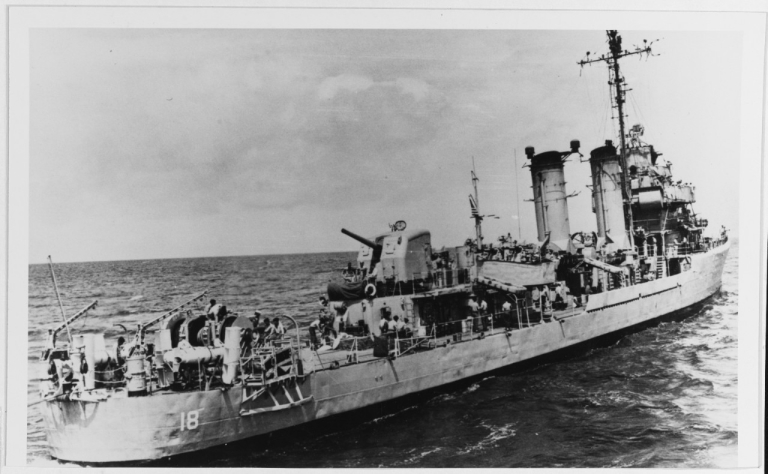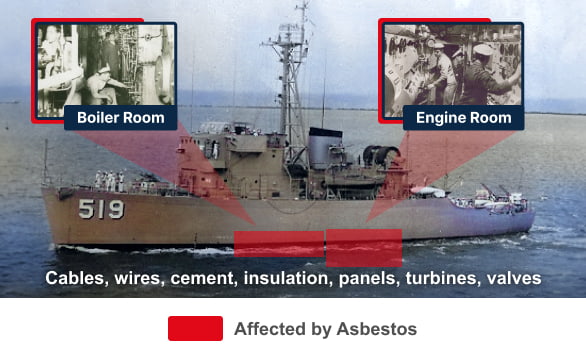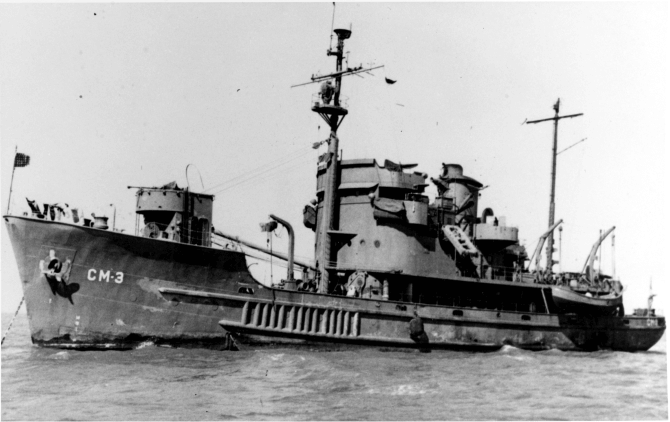U.S. Navy minesweepers were built with many asbestos products from the 1930s through the early 1980s. Asbestos was thought to be safe at the time, but it actually put Navy service members at risk of cancers like mesothelioma later in life. We can help veterans harmed by asbestos on minesweepers get military benefits and other key resources.
Was Asbestos Used on Minesweepers?
Yes, every U.S. Navy minesweeper was built with asbestos-containing products like insulation and piping for decades.
As a result, Navy veterans who served on minesweepers are at risk of mesothelioma, an aggressive cancer caused by asbestos.

Navy personnel didn’t realize that exposure to asbestos on minesweepers and other ships was dangerous until millions of people were exposed. This is because private companies hid the risks of asbestos, making billions of dollars while letting veterans get sick.
At the Mesothelioma Veterans Center, we believe that U.S. veterans deserve justice after a mesothelioma diagnosis.
We can help veterans with mesothelioma file for benefits from the U.S. Department of Veterans Affairs (VA) for free. Top benefits include medical care and monthly disability payouts. We can also assist eligible veterans in pursuing compensation through the legal system.
Learn about the ways we can help veterans like you in our Free Veterans Packet.
List of Minesweepers That Used Asbestos
Our team has identified nearly 300 U.S. minesweepers that used asbestos before the risks were fully known.
Some minesweepers that used asbestos include:
- USS Ability
- USS Advance
- USS Barrier
- USS Bold
- USS Bullfinch
- USS Candid
- USS Conflict
- USS Defense
- USS Devastator
- USS Energy
- USS Excel
- USS Fancy
- USS Force
- USS Gallant
- USS Goldfinch
- USS Harlequin
- USS Hilarity
- USS Implicit
- USS Indicative
- USS Jubilant
- USS Kingfisher
- USS Knave
- USS Lapwing
- USS Logic
- USS Lucid
- USS Mainstay
- USS Minivet
- USS Nimble
- USS Nuthatch
- USS Oriole
- USS Owl
- USS Peacock
- USS Phantom
- USS Quail
- USS Quest
- USS Redwing
- USS Ruddy
- USS Sandpiper
- USS Seagull
- USS Tanager
- USS Triumph
- USS Valor
- USS Velocity
- USS Waxwing
- USS Widgeon
- USS Zeal
You may have been exposed to asbestos even if a vessel you served on isn’t listed above. Any minesweeper built between the 1930s and early 1980s may have contained asbestos.
Why Was Asbestos Used on Minesweepers?
Asbestos was used aboard minesweepers because it was heat resistant, lightweight, durable, and a cheap alternative to other materials. This made it perfect for insulating boilers, engines, steam pipes, and hulls.
Asbestos was also a good fireproofing agent, which was important as minesweepers dredged up mines from the seafloor and had to withstand attacks from enemy ships and planes.
It wasn’t just minesweepers that used asbestos, though. For decades, government mandates required asbestos to be used aboard all U.S. Navy ships.
This meant that millions of Navy veterans were put at risk of asbestos exposure and mesothelioma.
Occupations at Risk of Asbestos on Minesweepers
Any U.S. Navy veteran who served on a minesweeper could have been exposed to asbestos. That said, those at the highest risk worked in boiler rooms or engine rooms, where asbestos could be found in gaskets, pumps, and insulating materials.
Other jobs at risk of exposure to asbestos on minesweepers included:
- Electricians
- Hull maintenance technicians
- Plumbers
- Painters
- Pipefitters
- Machinists
- Welders
Service members who worked in these roles often handled, repaired, and replaced asbestos-containing materials on a daily basis.


Navy personnel who worked on minesweepers in shipyards were also at a very high risk of exposure. Shipyard workers removed old or damaged asbestos products and installed new ones.
We may be able to help you access VA benefits, treatments, and compensation if you were harmed by asbestos on minesweepers. Get a Free Veterans Packet now to learn more.
Asbestos-Containing Products on Minesweepers
Dozens of different products used aboard minesweepers contained asbestos.
These products included:
- Cables and wires that ran through the ships
- Cement
- Insulation used in boilers, engines, bulkheads, and pipes
- Lagging cloth
- Machinery casings
- Panels
- Turbines
- Valves
“Members of the Navy were more likely than other military branches to have been exposed to asbestos and may have been exposed for a longer period of time because it was used throughout the ships.”
— Eric Hall, Major USAFR and Veterans Advocate
If products made from asbestos on minesweepers began to break down or were otherwise disturbed, tiny fibers could be released into the air.
Navy service members who breathed in or swallowed these fibers were put at risk of developing mesothelioma, lung cancer, and other illnesses 10-50 years later.
Adequate protective equipment was not provided to those working with asbestos-based products on minesweepers since the dangers were hidden by manufacturers — and there’s no way to lower the risk of mesothelioma after being exposed.
Compensation Options for Veterans Harmed by Asbestos on Minesweepers
U.S. veterans who developed mesothelioma from exposure to asbestos on minesweepers may qualify for compensation from the VA and other sources.
This financial compensation can help cover any expenses related to the cancer diagnosis, allowing veterans to focus on getting care and spending time with family members.
Our team can help you or a loved one pursue different mesothelioma compensation options below if you qualify.
VA Benefits
The VA offers many different benefits to veterans with mesothelioma linked to their military service.
Mesothelioma VA benefits include:
- Disability compensation worth almost $4,000 a month
- Health care services from top VA mesothelioma doctors and hospitals
- Housebound benefits for veterans who can’t leave their homes
- Survivor benefits for loved ones
Veterans with mesothelioma almost always receive a 100% disability rating. This means they are entitled to the highest disability payouts and the lowest health care copays.
If eligible, our team can help you file a mesothelioma VA claim or increase your disability rating to 100% for free. Get started right now.
Mesothelioma Lawsuits
Veterans exposed to asbestos on minesweepers may be able to file a mesothelioma lawsuit. Successful asbestos lawsuits award over $1 million on average, with some getting even more.
Qualifying veterans can get help filing a lawsuit from our partner mesothelioma attorneys. Only the manufacturers of asbestos-containing products that caused a veteran’s illness are sued — not the U.S. military or government.
Recent mesothelioma lawsuits have awarded veterans harmed by asbestos on minesweepers significant compensation.
Notable lawsuit payouts include:
- $1.83 million to an Arizona veteran who was a welder on the USS Petrof Bay, USS Kula Gulf, USS Nehenta Bay, and USS Swanee
- $1.65 million to a laborer from Minnesota who served aboard the USS Augury
- $1.39 million to an Oregon veteran who was exposed to asbestos on the USS Pine, USS Zeal, USS Redhead, USS Pivot, USS Force, USS Pandemus, and USS Preston
- $1.28 million for a Navy welder from Arizona who served on the USS Kitty Wake, USS Pelican, USS Fulton, USS Orion, USS Kankakee, USS Sunbird, and USS Bushnell
Our legal partners have recovered billions of dollars for past mesothelioma patients and can handle all the work of a lawsuit, so there’s no extra stress. Many patients start to get their first lawsuit payouts within 90 days of filing.
Asbestos Trust Funds
Veterans can also secure compensation by filing asbestos trust fund claims with a lawyer’s help. These trusts currently contain more than $30 billion and were established by bankrupt asbestos companies wanting to avoid lawsuits.
Our partner mesothelioma lawyers can see which asbestos trust funds you qualify for and file claims to seek compensation.
Contact our mesothelioma veterans experts now to find out which compensation options and resources you may be eligible for. Qualifying veterans can access lawsuits, trust funds, and VA benefits all at the same time. The first legal payouts often start in 90 days or less.
Help for Mesothelioma Veterans Who Served on Minesweepers
Navy veterans who served on minesweepers should look back on their years serving our country with pride. Sadly, many of these brave veterans develop mesothelioma caused by exposure to asbestos on minesweepers.
The Mesothelioma Veterans Center deeply cares about the well-being of veterans and families affected by this cancer and will do everything possible to help.
Work with our team to:
- Access resources: Call (877) 450-8973 now to see what benefits you qualify for.
- File for VA benefits: File a claim for free or increase your VA rating to 100%,
- Find top doctors: Explore our network of mesothelioma doctors who can treat you.
- Pursue legal compensation: File legal claims that usually pay out $1 million+.
Get a Free Veterans Packet to learn about all the ways we can assist you or a veteran you love.
Asbestos on Minesweepers FAQs
What are minesweepers made of?
Between the 1930s and early 1980s, almost all minesweepers were built with asbestos products to keep the ships insulated and fireproof. Asbestos insulation lined boilers, engines, pipes, wiring, and machinery casings.
Navy service members exposed to asbestos on minesweepers are at risk of developing a cancer called mesothelioma 10-50 years later.
Before the early 1980s, the dangers of asbestos on minesweepers were hidden by manufacturers. However, the U.S. Navy stopped building minesweepers with asbestos once the risks came to light.
Which U.S. Navy ships had asbestos?
All U.S. Navy ships built between the 1930s and early 1980s had asbestos on board, including nearly 300 minesweepers.
Government mandates required the use of asbestos on all naval ships for decades before the health risks became public knowledge.
The USS Toucan, USS Starling, USS Ability, and USS Chief were just a few of the hundreds of minesweepers built with asbestos-based products.
Call (877) 450-8973 now to find out if a minesweeper you served on put you at risk of asbestos exposure.
What was the toxic exposure on Navy ships?
Those serving aboard minesweepers or other Navy vessels were at risk of toxic asbestos exposure.
If asbestos materials like insulation wore out, fibers could be released into the air of these poorly ventilated ships.
Navy sailors who breathed in or swallowed asbestos fibers were then put at risk of mesothelioma or other asbestos-related diseases.
How can I get help after exposure to asbestos on minesweepers?
The Mesothelioma Veterans Center may be able to help you pursue VA benefits, top doctors, and financial compensation if you developed mesothelioma from exposure to asbestos on minesweepers.
Accessing these benefits can allow you to get the treatments you need and deserve without worrying about how you’ll pay for them.
Explore all the ways we can help you with our Free Veterans Packet.



